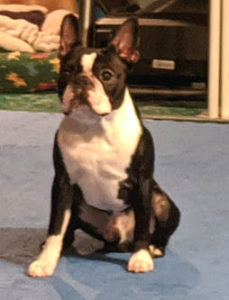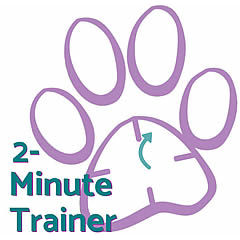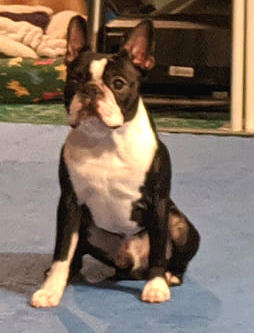Does your dog go (or even look) where you point? Or do they check out your pointing hand, sniff it, lick it and sit to be petted? Don’t worry – it’s easy to train your dog to follow the point.
After spending lots of time dropping through the rabbit hole of the internet, there doesn’t seem to be any consensus on whether dogs’ ability to follow where you point is nature or nurture. It is universally accepted that dogs can be trained to follow a pointer. But how, exactly, do you do that?
Looking to you
From the moment you bring a dog home, they’re always learning from you. If you have that niggling feeling there’s always someone watching, you’re right. Unless they’re asleep, your dog is always aware of where you are and what you’re doing. If you’re really attuned to your dog, they can even tell what you’re thinking. Like Fran’s Simon who wakes up from a sound sleep and dashes to the door when Fran thinks about walking her dogs.
If you make a habit of pointing at stuff, your dog may already have a notion of how it works. Most of us have dropped some tidbit on the floor and pointed to it, urging our dogs to get it. Sometimes it works. But it’s not a reliable behavior, just an occasional lucky find.
For this game, we’re going to transform that luck into a bet-on-it, go there, get that.
Intro to Follow the Point
The first step is stupid easy. Get a treat, put it on the floor. Point at it and tell your dog to get it. If your dog has a reliable “Stay!”, use it. Otherwise, hold the dog’s collar with one hand while you place the treat and point with the other. Be sure you don’t release the dog until you’re pointing. This step is just introducing your dog to the relationship between the “Point” and getting good stuff.
After a couple of pointed-at treats, your dog will catch onto the concept pretty easily to follow the point. The next step is to build some distance. If there’s no one else there, and your dog won’t “Stay!” put them on leash and wrap it around a heavy piece of furniture so they can’t grab the treat as you’re placing it.

Point at the treat and release your dog. Keep your arm up and the point intact. We want the dog to learn to move in the direction you’re pointing. Don’t move closer if they don’t dash right over. Just keep pointing. (Patience!)
After a couple repetitions, your dog’s going to start putting things together. Look for them to start watching your arm and hand. When they start anticipating where the instructions are coming from, you know it’s sinking in.
Now put the treat in a bowl and do the same thing another few times. We’re introducing the idea that even if the dog can’t see the treat, it will always be where you point.
What’s next?
It’s one thing for your dog to go where you point. It’s another to choose that direction over another. Get two identical bowls/dishes/targets to put the treat in. Put both bowls out at the distance your dog was successful. Put a treat in one. Go back to your dog and point at the bowl with the treat.
If your dog goes to the wrong bowl anyway, just start over. Try to figure out where the disconnect happened and go back to that step. If you have a dog who’s incredibly nosey, like Fran’s Simon, they’ll probably check out the second bowl. As long as the dog went where you were pointing first, that’s fine. It’s actually a good thing. They’ll know that there are rewards for going where you point, and nothing anywhere else.
This step teaches the dog that there will always be something good where you point. Even when there’s not a treat where you’re pointing, there will be a reward for going there. Dogs reliably do whatever’s most rewarding for them. Make following your point rewarding every time.
Nothing in the bowl
The next step requires the “leap.” Set out the two identical bowls. Don’t put anything in either one. Leave a good distance between the bowls so your dog can’t possibly confuse which you point at. Set up with your dog at your side and point at one of the bowls. If your dog goes to the right bowl, get over there and give your dog a jackpot! Do it again.
When your dog is getting it right most of the time, you can up the challenge by increasing the number of bowls, moving them closer together, or any variation you can think of. As long as your dog always gets rewarded for getting it right, they’ll keep going where you point.
Use your imagination
Following your “Point!” can be the start of all kinds of “go there, get that” behaviors. In competition obedience, it’s known as the Directed Retrieve. The exercise is part of the highest level of Obedience (Utility), and involves three gloves, evenly spaced along one side of a 40 foot long ring. At the opposite side of the ring, the handler points their dog at whichever glove the judge designates. The dog runs out to the glove, picks it up, brings it back to the handler, sits, drops the glove on command.
There are lots of steps for the dog to learn. And all of them are fun for both of you. Recently we saw a version where the dog ran to a cooler, opened it, picked out a bottle of water, and brought it to their person. Your dog can do it, too!

